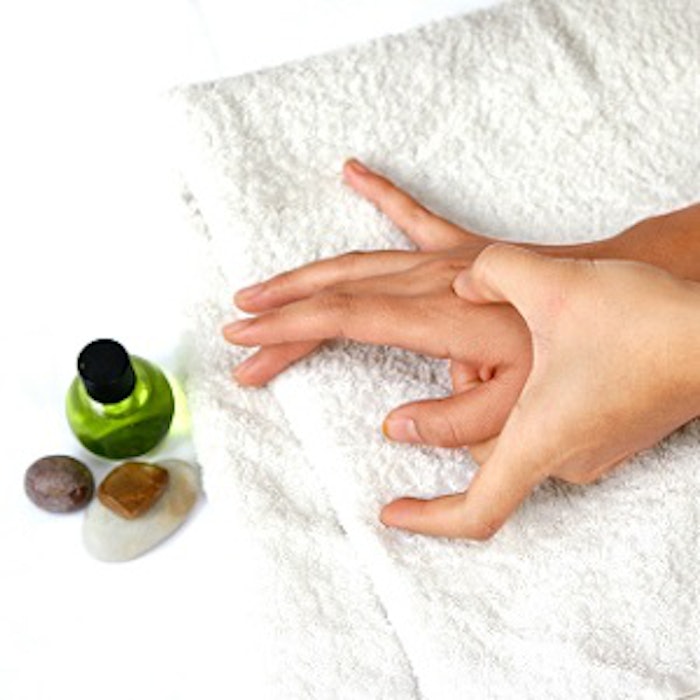
You've all heard the expression, "Be careful what you wish for." This has special significance for the professional skin therapist. We start out wishing so intensely for something that we literally dream about it while sleeping, obsess about it while washing the thousand and one towels during a day’s work, fret over it while riding the train to work and even think about it while drinking a cup of tea at the end of a long week of work. What we wish for is excellence, in technical terms—hands that know what they’re doing even before we do, skills that are polished to perfection.
This is what classical violin and piano prodigies wish for, too, for their neurons to remember the proper technique flawlessly and be able to repeat the practiced patterns without fumble or stumble. Great ballerinas dream the same, as do great athletes. The goal always in mind is the moment when twitching nerve fibers and synaptic brain connections, trained by endless repetition, transcend mere sweat and motor control to become pure grace.
The sales reality
But here’s the hard truth: Art does not pay the rent. Even classical violinists and ballerinas have stage mothers, promoters, agents and managers. Someone sells the artist to the public—otherwise, the artist won’t be able to afford violin strings, toe shoes or, in your case, new towels.
The same is true of the gifted skin therapist. Your technical skills are wonderful, but you need to be able to sell these skills in order to get clients walking through the door and the cash register buzzing with excitement. Having mastered effleurage, petrissage and all your other spa abilities, the skill you’ve probably developed the least so far becomes the most critical: selling, as in selling yourself as a professional and selling your professional services.
As a novice, you required mentoring. Now in order to create a truly dynamic future practice, you may need re-centering, and the new center of your practice must become self-marketing. This means proactively presenting and packaging yourself and your services to potential clients, primarily through networking and word-of-mouth. Often, this is not easy for estheticians and skin care professionals. Just as we may shy away from aggressively retailing products, we often don’t sell ourselves very well, or at least not at first.
This must change. The key challenge you face in the midst of a growing practice is learning how to see virtually everyone you meet as a potential client, and becoming comfortable in approaching that person with this in mind is a powerful and necessary process. You’ll do it mostly by simply talking to the people you meet. Public relations and advertising may also be utilized once you’ve got the viral marketing in motion.
The need for intelligent self-promotion has never been more essential. The fact is the skin care marketplace now is brutally competitive, even more so than was the case a mere five years ago. In order for your practice to thrive, you must go beyond your own technical expertise and begin selling.
Today’s clients have access to an array of medical spa services that deliver visible changes literally overnight. Your clients can also easily purchase professional-strength products over the Internet or at beauty emporiums. The point of difference in your spa is you, so you must offer clients something they can’t get elsewhere.
Assets highlighted
Golden rule number one for a growing practice is to expand your business by actively offering your own unique mix of targeted specialties. Clearly verbalize what you have to offer, and seek out opportunities to offer it. Yes, that means always having your business card ready, and making sure your current clients have a few cards to give to friends.
Your USP—Unique Selling Proposition, or what makes you special and different from every other skin therapist out there, discussed in the Good Hands column “Beginner’s Mind, Winner’s Attitude—You’re Hired!” in the April 2007 issue of Skin Inc. magazine—is the key to marketing yourself to prospective clients. Train yourself to mention your specialties when you meet new people. These specialties should include things such as unique massage techniques or the use of galvanic current, high frequency, microcurrent and ultrasonic treatments—services that the client cannot possibly replicate at home. Highlight anything that separates you from the pack.
And, as always, the all-purpose golden rule applies here: Continuing education plays an essential role in keeping your practice vibrant. While you need to continue to seek out classes that explore new skin care techniques, you now also must devote equal or greater attention to business classes, especially those that deal with marketing.
Something as simple as the layout of your floor plan or the way the merchandise is arranged on the shelves will have a huge impact upon your traffic and sales. Is your best-selling inventory placed at eye-level or just below? Can shoppers easily find their way to the “money shot,” which is the cash register, where they can make a purchase, or is the path to the sale cluttered with desperate point-of-purchase displays that distract from the transaction? Do you know where your retailing “hot spot” is?
No doubt, there is more not only to retailing but also to overall marketing than you imagined, and the smartest business decision you can make at this point in your practice is to dedicate some time and education dollars to learning more about business itself.
Now, in the spirit of marketing and salesmanship, a special two-for-one offer, good today only, absolutely free and at no additional cost to you, here’s the second golden rule for a growing practice.
Keeping clients
Golden rule number two for building up a growing practice is that retaining current clients is as important as attracting new clients, so they must be cemented into your appointment book.
To accomplish this, set long-term goals and create a timeline for your clients, just as hair stylists do. They lay out a series of appointments where they plan to incrementally raise or lower various color tones or perform other hair maintenance tasks. This creates an effortless platform for rebooking, retailing and committing the client to future visits. It also allows them to monitor problems and progress in the long view. And this ongoing dialogue offers a painless venue through which to introduce new products, services and promotions to your regular clients.
Jane Wurwand, CEO and founder of Dermalogica and The International Dermal Institute, often refers to “productive discomfort,” and how we must deliberately seek it out in order to keep growing. So prepare to be a bit uncomfortable. Learning to market yourself may initially seem as strange to you as the first time you put on your uniform and gave a hesitant, tentative professional treatment. The apprenticeship phase of your development as a therapist took place in the treatment room, probably more or less in silence. Now that you’ve mastered those technical skills, this is your opportunity to come out of the treatment room, step up, speak up, and shine.










